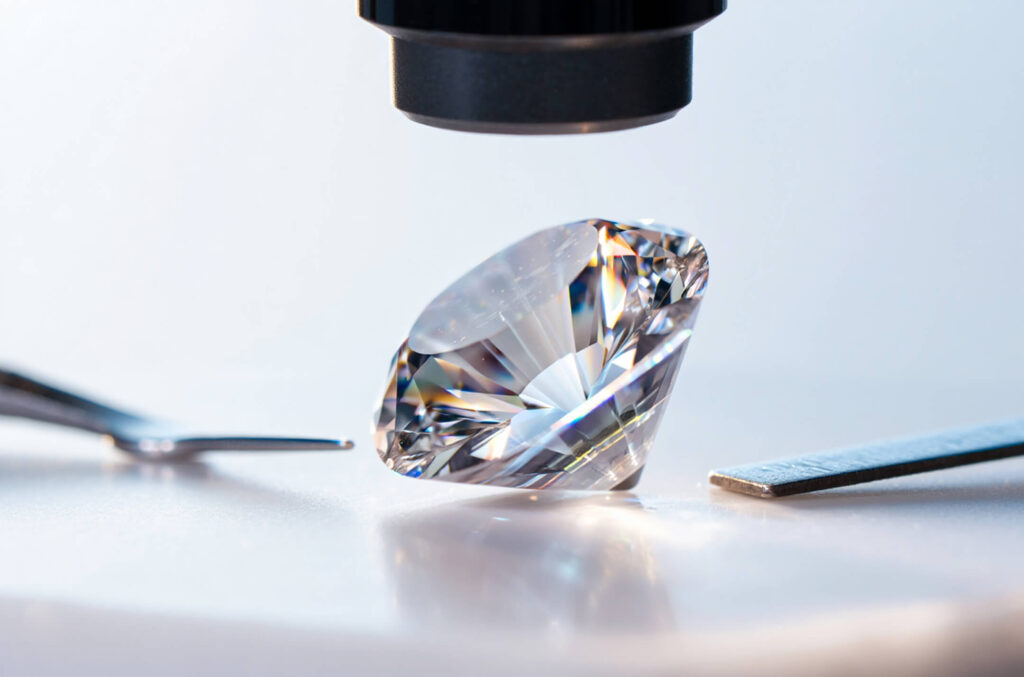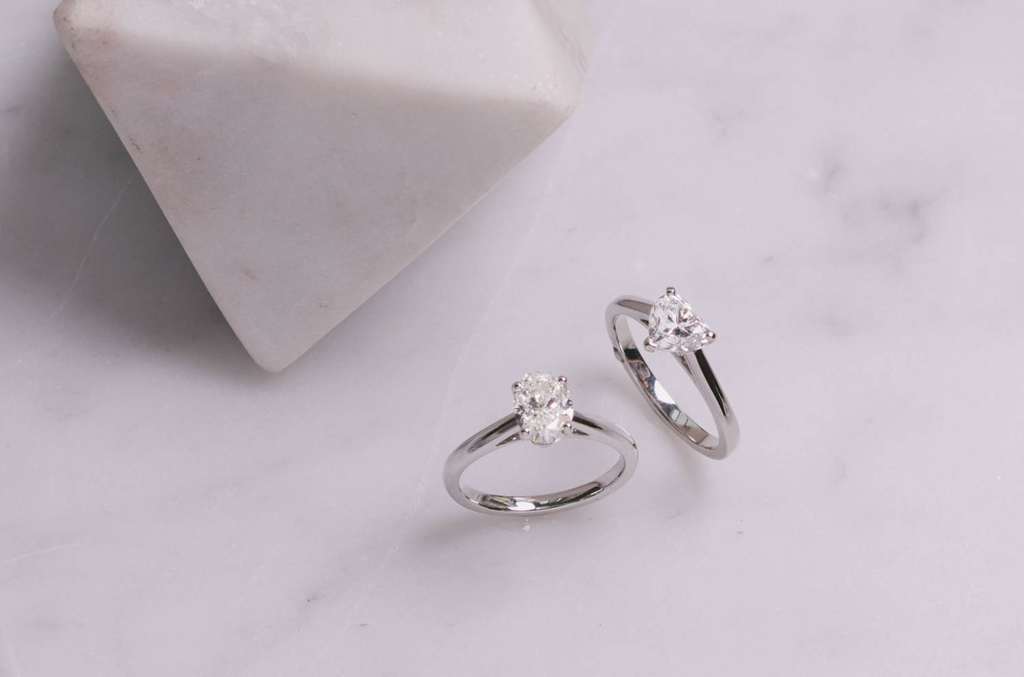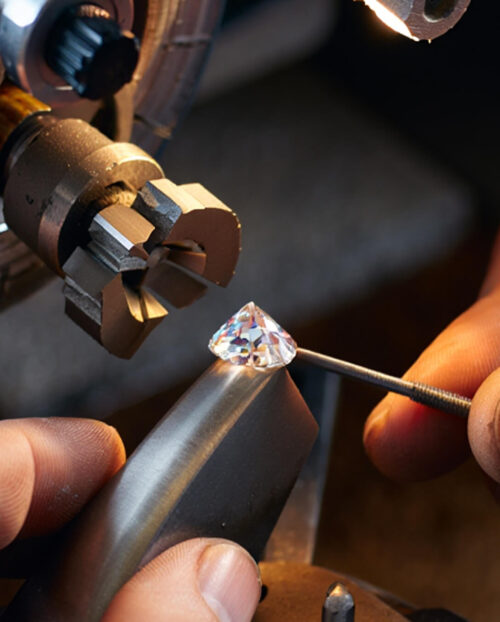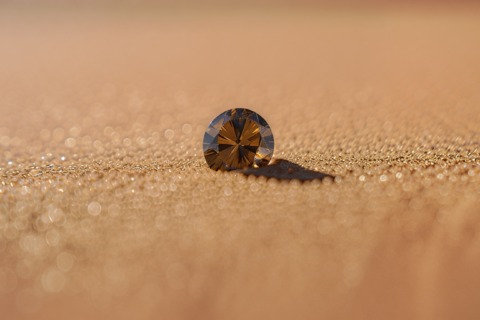Before it wows on a red carpet, ring finger or set of studs, every natural diamond starts life as a raw piece of crystallized carbon. And while rough diamonds themselves can be stunning, a masterful cut can transform it into something truly spectacular.
Why cut quality matters in natural diamonds
Diamond cutting is both art and science. It’s the only part of the 4Cs of diamonds (cut, color, clarity and carat) that’s entirely in human hands.
In simple terms, cut quality determines how a natural diamond plays with light, how it bends, reflects and refracts every beam that hits it. This interaction is what gives a diamond its fire (those gorgeous flashes of color), brilliance (that white sparkle) and scintillation (the ‘dance’ of light as the diamond moves). Its cut is what makes a diamond look alive.
Even a high-carat, flawless diamond can appear flat-looking if its cut isn’t up to scratch. Think of it like a perfectly cast actor with a bad script. A well-cut diamond with slightly lower grading in terms of the other Cs, on the other hand, can outshine the rest if its cut is, quite literally, on point.
How expert cutters balance weight and brilliance
Behind every breath-taking diamond is a cutter, also called a diamantaire, who made dozens – sometimes hundreds – of small but very important decisions. These carefully made creative calls balance two competing priorities: to preserve a diamond’s carat weight and maximize its brilliance.
When cutters evaluate a rough diamond before working on it, using state-of-the-art mapping technology and artistic intuition, they consider everything from its natural shape and internal flaws to external blemishes and potential yield (the amount of usable diamond that’s left after it’s been cut). Picture the cutter like a fashion designer, tailoring couture and cutting away excess fabric to sculpt the perfect fit.
These decisions don’t just affect how the diamond looks today, but impact how it may be financially valued decades down the line. More on that later…

How faceting and proportions affect brilliance
So, what exactly makes a well-cut diamond seriously sparkle? Just ask anyone who saw the necklace Indian heiress and business magnate Isha Ambani wore to the 2025 Met Gala. Her 481.42-carat masterpiece, centered around a stunning 80.73-carat cushion-cut diamond, lit up the red carpet1. No filters or flash needed; it was all precision-cut brilliance.
The secret behind that kind of dazzle is geometry. Every facet and proportion is meticulously crafted to bounce light in all the right directions, creating fire and brilliance.
Faceting is the process of cutting tiny flat surfaces into a diamond. The placement, size and angles of these facets (or flat surfaces) allow light to enter the gem, bounce around and shoot off it.
There are many different types of facets and terms regarding a diamond’s cut, which are useful to know when considering buying a diamond:
Table
This refers to the large, flat top of a diamond. Size is important here – too big and light leaks out, but too small and the ‘sparkle window’ has been compromised.
Crown angle
This is the angle between the diamond’s table and the sloping facets just below it (called the crown facets). This affects how light enters and leaves the diamond, playing a key role in its dazzle.
Pavilion depth
This is the lower half of the diamond. If it’s too shallow or too deep, light escapes instead of returning to your eye, making the diamond look dull or dark.
Symmetry
A diamond’s symmetry is how precisely its facets are aligned, shaped and positioned next to each other. Even slight imperfections in positioning can cause diamond brilliance to dim. That could be why some diamonds might look a little ‘off’ to the naked eye.
Together, these elements help shape a diamond’s ‘light signature’. Two diamonds with identical carat weight and clarity can look totally different under the spotlight thanks to their cut.
How cut influences a diamond’s value
It makes sense that the more ravishing the diamond, the more coveted it is, and so a diamond’s brilliance can be directly tied to its monetary value.
Polished diamonds larger than 0.3 carats in weight (also known as 30 points) come with a diamond grading report. This report documents key details about the gemstone:, namely its origin and grading in reference to the 4Cs.
In terms of cut, the report will state a diamond’s grade – Excellent, Very Good, Good, Fair or Poor – and often include a diagram depicting its exact proportions and measurements.
Diamonds with Excellent cut grades typically fetch higher prices2, because brilliance is seen to make a diamond more beautiful and desirable3. Cut quality is factored into resale and insurance assessments4.

The difference between factory-cut and expertly-cut diamonds
However, not all diamonds are cut with quite the same artistry. In some commercial cutting operations, the priority is often yield over beauty, and in an attempt to get maximum carats from a gem, cut quality can be compromised.
You may see this drop first-hand; mass-market diamonds, like lab-grown diamonds (also called LGDs), may look OK under fluorescent store lights but fall flat in daylight. On the other hand, natural diamonds often receive more dedicated time, individual attention and meticulous care in the cutting process.
Questions to ask when assessing diamond cut quality…
If sparkle is top of your wish-list when buying or researching diamonds, keep these pointers front of mind:
Does it look symmetrical?
And does the diamond ‘come alive’ when you move it and hold it at different angles?
Check the grading report!
An Excellent (sometimes also called ‘ideal’) cut grade is a great sign.
Ask about light performance
Reputable sellers can provide brilliance or fire analysis, so don’t be shy to ask.
Trust your eyes
If one diamond ‘winks’ at you more than the rest, it’s most likely been cut with serious care.
Ask anyone who knows their gemstones – a diamond’s true sparkle is down to the art of the cutter. From navigating that delicate balance of proportions to prioritizing its brilliance wherever possible, craftsmanship is what transforms an natural gem, born deep with the Earth, into a ravishing treasure. Be sure to choose wisely when it’s your turn to shop.



